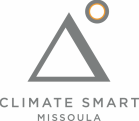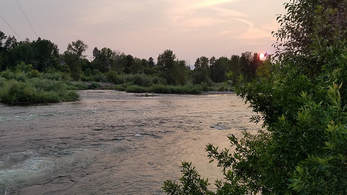 Summer smoky skies along the Clark Fork in Missoula. (Photo: Abby Huseth) Summer smoky skies along the Clark Fork in Missoula. (Photo: Abby Huseth) Call me biased, but our monthly meetups are pretty great. I think you’d be hard pressed to find a more interesting and wide-ranging conversation anywhere in town. Where else can you talk about pumped hydro energy storage technology, the virtues of lentil farming, the perils of human urine, and industrial-scale composting, all in the span of an hour and a half? If you couldn’t tell, the common thread running through these subjects is water – more specifically, the implications of climate change when it comes to our rivers, our drinking water, and our wastewater. That was the theme on tap for our August 2, 2018 monthly meetup - here's a recap of our conversation. Our Rivers Alex and Katie from the Clark Fork Coalition joined us to talk about what they’re seeing along the Clark Fork, here in town but also throughout our larger watershed. Alex was one of the authors of the Montana Climate Assessment, so he knows his stuff. CFC measures water all over the river, and this year there was a record snowpack in the upper Clark Fork, and a fairly wet spring. But this July was also the second driest on record – which, sure enough, was what the MT Climate Assessment predicted. Despite this lack of rainfall, we’re still seeing decent flow levels and relatively cooler water temperatures all along the Clark Fork because of something you might not have guessed: groundwater. In fact, we learned that 90% (!) of a watershed’s waterflow is actually underground. Whoa. So despite the trend of more spring precipitation and longer droughts in our region, the snowpack and rain may end up boosting the “natural storage” capacity of the watershed. That might sound good, but we’re definitely not out of the woods climate-wise when it comes to our rivers. Hotter temperatures mean higher rates of evapotranspiration, thus plants need more water to grow. More study is needed on what this means for the long-term evolution of our forest ecology. Alex reminded us that 95% of our state’s water use is due to agriculture. This is where we wade into the complicated realm of water rights and Helena lobbying interests, and then wade right back out again, because we could really get stuck there. Suffice to say, even when a rancher wants to return their water right to in-stream, it’s super hard to do. And most of the agriculture in our state is low-value commodity ag, so it’s hard to economically justify efforts to conserve water. What we could really use is more lentils! No, seriously – legumes and other dry-farmed products are a growing sector of Montana agriculture, which is pretty cool, and water smart. (Check out the Lentil Underground!) Ok, one last interesting issue at the nexus of water and climate that I hadn’t considered before. Katie from CFC talked about their recent studies on recreation on the Clark Fork river. As we experience more heat waves during the summer, more and more people are using the river to cool down. On one hand, dunking in the river is better than cranking the A/C. But in addition to bumper-to-bumper tube traffic on certain sections of the river, more river recreators means streambank erosion, more trash, and an overabundance of human urine. Yep. So it’s possible that we might we need more official river access points…with port-a-pottys. Thanks, climate change!
Avoiding overwatering outdoors is important too (those subdivided ranchettes with giant lawns don’t help...), but by all means keep your veggie patch green and water your trees - we need them to keep our city cool! If you’ve ever wondered about graywater systems (where water from sinks and laundry is recycled, either to flush toilets or for irrigation), they are allowed here but you’ll want to read up on the rules and regulations. 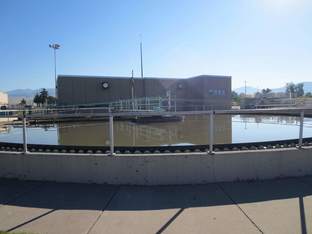 A primary treatment pond at the WWTP where most of the bio-waste settles before it is dewatered and composted. (Photo: Mattie Lehman) A primary treatment pond at the WWTP where most of the bio-waste settles before it is dewatered and composted. (Photo: Mattie Lehman) Our Wastewater Treatment Plant Rocks! So, what about that last piece of the water+energy puzzle – the treatment of our sewage and wastewater? Turns out, our humble little municipal wastewater treatment plant is light years ahead of most facilities around the country! Our intern Mattie shared what she recently learned on a tour, which was that there’s resource recovery happening with all three different waste streams created by the plant: the bio-solids (solid waste), the effluent (liquid waste), and methane gas. The City-owned Garden City Compost, right next door, accepts treated bio-solids, which are then turned into compost that’s available for sale, as well as used on the neighboring plantation of poplar trees. The poplar plantation is also a destination for a large volume of the effluent. The trees and soil filter the effluent before it returns to the aquifer, and the nutrients benefit the fast-growing trees, which can then be harvested in succession and sold for wood products. And if that wasn’t enough, the wastewater treatment plant also recently put a new methane cogeneration plant online. This dual technology recovers lost heat as well as generates electricity from the recaptured methane – covering 25% of the plant’s usage at peak! All of these sustainable elements reduce the impact of the resource-intensive process needed to get wastewater to meet the high standards for discharge back into the river, and mean that ultimately less has to get discharged. (Mattie's been working on a "Storymap" project highlighting this story as well as other "energy stories" around town - we're looking forward to sharing her great work soon. In the meantime, check out this handy infographic on the WWTP resource recovery efforts that she created.) Water, Climate, and Missoula’s Future
As our climate changes and our population here grows, keeping our rivers cool and plentiful for fish and humans, and conserving water and the energy embedded in it will be more and more critical. We’re grateful for the visionary and hard work of the Clark Fork Coalition, our Wastewater Treatment Plant staff, Missoula Water, Garden City Compost, and so many more great organizations that maintain this resource which is so important to our identity as Missoulians as well as to building climate resilience for a hotter, drier future that is already here. Join us next month for our September meetup on Renewable Energy! Thursday, September 6th, 5-7pm at Imagine Nation as usual. Snacks, tasty beverages, and good conversation guaranteed! -Abby Huseth
1 Comment
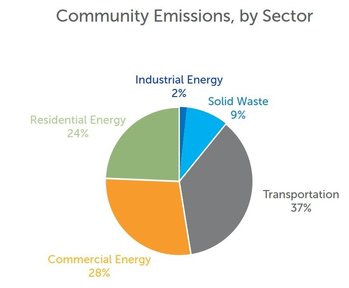 Here in Missoula, this winter sure seemed long, wet and cold – good news for mountain snowpack. But as a new homeowner, this winter was rough on my budget. There’s nothing like getting a $200 energy bill in the mail to get you thinking seriously about saving energy! When we moved in to our house last fall, we had tried a few basic tricks to reduce energy use: replacing old incandescent light bulbs with LEDs; installing programmable thermostats so our heat was only on when we needed it; putting on storm windows to reduce heat loss. Even so, this winter was a wakeup call. I know I’m not alone: many of us want to shrink our carbon footprint - and our bills! But we don't always know how to take the next step. At our April Monthly Meetup last Thursday, the conversation was all about energy efficiency and conservation – and the particular challenges and opportunities around energy use in our community. To put things in context, we were excited to share the results of our first community-wide greenhouse gas emissions inventory, hot off the press last week! The inventory is a complete account of all the emissions sources within the Missoula urban development boundary – and gives us a baseline from which to measure progress towards long- and short-term climate mitigation goals. (Check out the full report here and an article about it in the Missoula Current here!) As the pie chart shows, residential energy use makes up nearly a quarter of our community’s emissions. Not only is this a big slice of the pie, but it’s an area where everyone can get involved. Our individual efforts make a real impact when they are part of a collective movement. That’s why we’re challenging Missoula to be Energy Smart and reduce our use 10% by 2018!
We hope you’ll take us up on our Energy Smart challenge and commit to doing your part to save energy! Here at Climate Smart, we don’t have a silver bullet for how best to track and reduce our energy use, but we’re not going to let perfection get in the way of progress. We’re ready to help Missoula start saving energy - here’s what you can do TODAY to join us:
I’ll leave you with a few of the great energy-saving ideas that came out of our meetup - this is the kind of creative thinking we love to see. Have more ideas? Want to help make these happen? Let us know!
Thanks to everyone who joined us for another great gathering last week! Mark your calendars for the next Monthly Meetup on local food and agriculture – Thursday, May 4th, 5-7pm at Imagine Nation! -Abby
Autumn might just be my favorite season. The air outside is cool and crisp, the slanting light brings the golden mountains and trees into gorgeous contrast, cozying up inside with a steaming mug of tea seems ideal…are you a fan of fall too? Fall is also the time of year when I become hyper-sensitive to the indoor spaces I spend time in, turning on more lights and bumping the thermostat up a few degrees. After months of warm summer weather, it’s almost easy to forget that we live in a place that is cold and dark a lot of the year!
In the policy realm, an exciting effort, led by Northern Plains Resource Council, is also championing the passage of PACE legislation in the upcoming 2017 state legislative session. What the heck is PACE, you ask? It stands for Property Assessed Clean Energy, and in a nutshell, it’s a funding mechanism that expands opportunities for renewable energy and energy efficiency measures for homes and businesses.
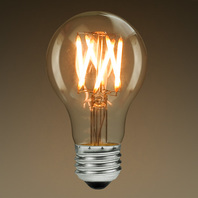 LED light bulbs are SUPER energy efficient and even come in decorative options. LED light bulbs are SUPER energy efficient and even come in decorative options.
Policies like PACE are super important, but they're only part of the energy sandwich. Forgive the silly lunch-hour metaphor, but if energy policy is the peanut butter, then the jelly is all the energy saving actions we can take as individuals and as a community. And the more jelly, the more delicious the sandwich! Replacing an old water heater or putting your lights on a timer may not be as sexy as installing shiny solar panels on your roof, but energy efficiency and conservation measures like these are pretty darn effective at shrinking carbon footprints, not to mention good for the wallet. (Wondering what’s the difference between efficiency and conservation? Good question. Check this out.)
At our meetup, we asked those gathered for some feedback and brainstorming about how to get our community jazzed to save energy together. Maybe all we need is a little friendly competition with our friends, neighbors, and co-workers. We are interested in gathering ideas and we want your help! We’d love it if you would take a minute to get in touch and tell us:
As the weather gets cooler and winter marches ever closer, throw on an extra sweater, put your thinking cap on and share your creative ideas for saving energy with those around you, and with us, of course! 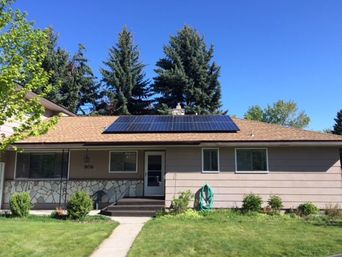 A Solarize Missoula installation. A Solarize Missoula installation. At our Climate Smart Missoula monthly meetups, we love teasing out the connections between climate change and a wide variety of issues that affect our community. Sometimes, those connections may not be obvious until we dig below the surface – like in the case of local food and agriculture. Not so this month. What’s the first image that comes to mind when you think of climate change solutions? A wind turbine? A solar panel? You’re probably not alone – developing renewable energy is a key focus of climate change mitigation strategies, and for good reason. Burning fossil fuels (coal, oil, and natural gas) for energy contributes by far the biggest share of greenhouse gas emissions here in the U.S., so we know that shifting to clean, renewable energy sources like wind, solar, and hydro power is the way of the future. Thankfully, that future is closer every day. One of the goals laid out in our community climate action plan is to move Missoula towards renewable energy. There’s a lot more we can do – but we’re well on our way. Last night, a few good folks were on hand to share a little more about what renewable energy looks like here in Missoula. Local Control over Energy Most of us don’t get to choose where our energy comes from. Our utility – here in the Missoula area, either Northwestern Energy or the Missoula Electric Co-op – buys power from a mixture of power sources, some renewable and others fossil fuel-based, and that mixture of electrons turns your lights on when you flip the switch. But there are some exciting new ways Missoulians can have more control over their energy. One is through community solar, a shared arrangement that allows community members to invest in part of a larger solar installation in exchange for clean energy. As a democratically-run cooperative, Mark Hayden, the general manager for the Missoula Electric Co-op (MEC), explained that MEC installed a 50 kilowatt community solar array in December 2015 in response to co-op members’ desire for more renewable energy. For $700, members essentially purchase one of the panels, guaranteeing them that panel’s energy output for 25 years. There was such demand that it sold out in just a couple months, so MEC has built a second community solar array, this time on the roof of Frenchtown High School. And you may be asking - what about those who can’t afford $700? In collaboration with a local bank and the federal Low-Income Home Energy Assistance Program they help make the benefits of the community solar project accessible to low-income members. Pretty cool stuff! Solarize Missoula is another program that’s moving renewable energy forward in our community, by making the process of rooftop solar installation streamlined and easy for homeowners. Bryan von Lossberg, a key Solarize organizer, explained that through the program four local solar installers put up over 42 new rooftop systems on homes around Missoula last winter – supporting our local economy while shrinking our community carbon footprint. We’re pretty proud that we got to work with great partners like the Montana Renewable Energy Association and the Missoula Federal Credit Union to get Solarize off the ground last year – and it was such a resounding success that we’re doing it again! Keep on the lookout for more information soon and contact us if you would like to be on the list for Solarize Round 2. The Big Picture
We’re thrilled to see more solar going up around town, and we love to see projects that save money and are good for the planet. But we know that there’s lots more progress to be made. Here at Climate Smart, we’ll continue to advocate for laws and regulations at the local and state level that are friendly towards renewable energy development, and support efforts that make renewable energy more accessible for all. But it’s important to remember that the cheapest (and most climate smart) energy is the energy we don’t consume! Anything we can do to be more energy-efficient (like trading out old incandescent light bulbs for LEDs) or simply use less energy goes a long way towards reducing our carbon footprint and boosting the impact of new renewable energy sources. We may not all be able to put solar panels on our roof or take part in a community solar project – but collectively, we can all use energy more wisely and use our votes and voices to advocate for clean energy solutions! 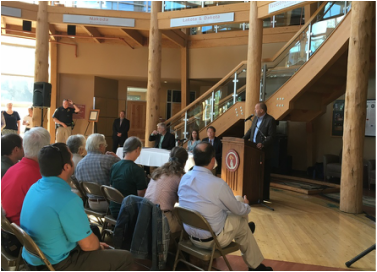 Yesterday, Governor Steve Bullock was on hand at the Payne Native American Center on the UM campus to promote his new plan for Montana’s electrical power sector. Missoula Mayor John Engen, Montana Renewable Energy Association (MREA) executive director Diana Maneta, and Missoula Federal Credit Union (MFCU) CEO Jack Lawson shared the stage with the Governor for a rather quick (but engaging!) conversation about clean energy in our state, sponsored by Charge Montana. Climate Smart was there and here’s what caught our attention. We welcome your thoughts. First, the Governor highlighted key goals contained in this energy “blueprint” that he hopes to achieve by 2025, including:
And it’s encouraging that the Governor’s vision includes capitalizing on Montana’s abundant clean energy resources – especially solar. We know energy is an important sector of our state economy, and as MREA’s Maneta reminded us, it is a sector in transition. Already, nearby states who buy our energy are moving away from coal and towards renewables like wind and solar power. As the price of solar continues to drop, doubling solar investment is a no-brainer. In fact, we think we could beat that goal handily: solar currently makes up a mere 0.1% of total electricity generation in Montana, even though it has the potential to meet 28% of our electricity need. Let the sun shine! An important piece of this puzzle is, of course, funding. MFCU has been a key partner in the Solarize Missoula campaign, and they are eager to find more creative ways to support renewable energy. As Lawson explained, there are three great reasons for MFCU to partner on clean energy: it aligns with their mission of building members’ financial stability, it reflects their members’ desire for their dollars to have a positive social impact, and dropping costs mean it’s also just good business! Done right, renewable energy benefits everyone. Just look at the solar industry, which is growing by leaps and bounds. That’s especially good news for jobs. Nationwide, over 200,000 people are employed in the solar industry – nearly triple the number in coal – and that number is expected to double by 2020. In 2015, the solar industry added jobs 12 times faster than the rest of the economy. We’re excited to hear the Governor’s support for harnessing the potential of solar to provide good jobs and build a more resilient energy economy, able to meet the challenges of a changing climate. We liked what Mayor Engen said: the Governor’s plan represents an opportunity to “determine our future instead of stumbling into it.” We’re thrilled so many community leaders and members came out mid-morning and mid-week to engage in this mid-transition energy discussion. Missoula is right in the middle of the solutions – a great place to be. What do you think? |
AuthorsAbby Huseth Archives
July 2024
Categories
All
|
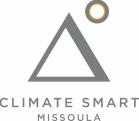
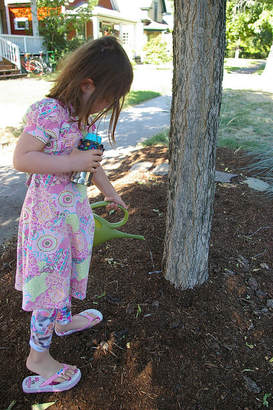
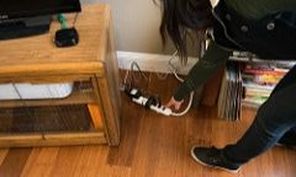
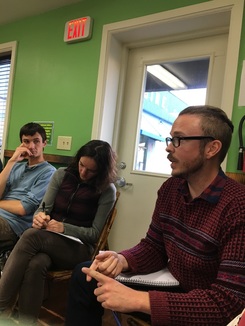
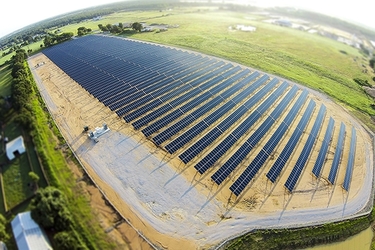
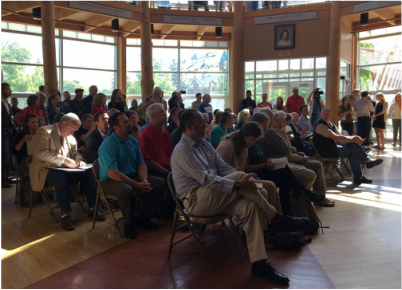
 RSS Feed
RSS Feed


